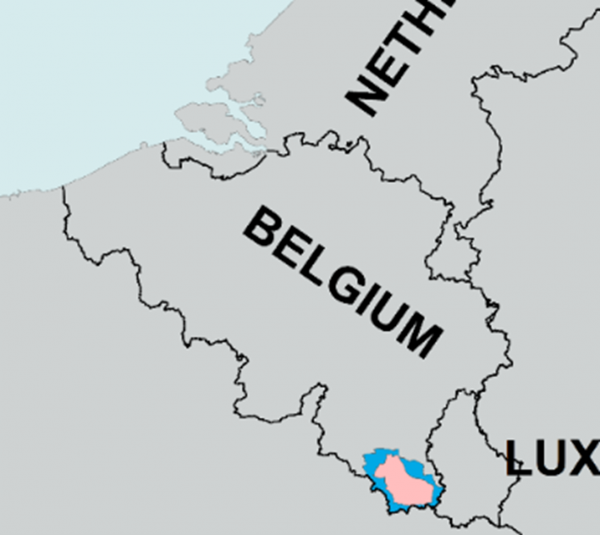The last positive case confirmed on a fresh carcass dates from the 11th of August 2019. Up until the 1st of September 2020, 5352 wild boar have been analysed for ASF, among which 833 have been confirmed positive for African swine fever (ASF).
Since September 2018, when the first cases of African swine fever were discovered in wild boar in the south of Belgium, the regulated zones I and II, that were put in place as one of the measures of ASF containment, have been adapted several times. Following the discovery of the first ASF cases in wild boar, an initial infected zone was set. In November 2018, the European regulated zones were put in place: zone I (buffer zone) and zone II (infected zone). These zones cover a small area in the south of Belgium.

The search for dead carcasses of wild boar has been more intensified since the beginning of autumn 2019. The 6 cases identified after the 11th of August 2019 have all been confirmed on the remains (only bones) of wild boar that died several months before the discovery of the bones. Those bones were dry and completely emaciated when found. The age of the bones was evaluated by testing for remnant DNA and the results of the analysis performed by the National Reference Laboratory indicate that the wild boar they originate from died several months before the dates the bones were found.
Since the 18th of May 2020, the regulated zones were adapted. On that day, the European Commission ratified Belgium’s proposal to reduce the ASF-infected zone in the province of Luxemburg. “The reduction of the zone is a positive signal towards countries that have suspended the import of Belgian pork,” says Denis Ducarme, Belgian Minister of Agriculture.
Several criteria were taken in account when the decision of reducing the zone II was made. Last positive case in that zone dates back to 17th of February 2019
-
The efforts of passive and active surveillance have been maintained, and all will boar found dead or culled tested negative for ASF
-
No domestic pigs remain in this area of Part II, as all holdings have been emptied in September 2018 and are not allowed to restock.
Belgium has kept its free status of ASF for domestic pigs
Ever since the first wild boar tested ASF-positive, Belgium has succeeded in keeping domestic pigs and wild pigs kept in captivity free of ASF contamination. The official OIE attestation can be found at the website of the World Animal Health Organisation (OIE).
An enhanced passive surveillance of the domestic pig and captive wild pig population is implemented at national level by means of sampling all sick pigs before initiating a medical. More than 16.597 samplings have been taken to date, all negative. Furthermore, an active surveillance system is set up in the framework of Aujeskzy monitoring. All blood samples that are taken to test for Aujeszky disease, are also tested for ASF.
Towards a full ASF-free status
If no infected boar are detected, Belgium could regain its ASF-free status for all porcine animals in the Autumn of 2020. Denis Ducarme, Belgian Minister of Agriculture: “We must remain vigilant to give back our country its ASF-free status. This would lead to the abolishment of the last embargoes on the export of our pork.”